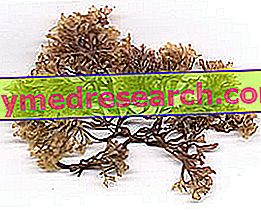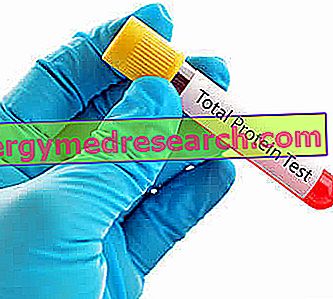
What is Gardasil?
Gardasil is a vaccine consisting of a suspension for injection containing purified proteins for four types of human papillomavirus (types 6, 11, 16 and 18). It is available in vials or in pre-filled syringes.
What is Gardasil used for?
Gardasil is used in patients aged nine or over to protect against:
- precancerous lesions (abnormal cell proliferation) in the genital area (cervix, vulva or vagina) and carcinoma of the cervix, caused by certain carcinogenic types of human papilloma virus (HPV);
- external genital warts (genital warts) caused by specific types of HPV.
Gardasil is given according to official recommendations.
The vaccine can only be obtained with a prescription.
How is Gardasil used?
Gardasil is given to individuals at least nine years of age, in three doses, leaving an interval of two months between the first and second dose and a four-month interval between the second and third dose. If an alternative program is needed, the second dose should be administered at least one month after the first, and the third dose at least three months after the second; all doses must be administered within the period of one year. It is recommended that once the first dose of Gardasil is received, complete the treatment by taking all three doses. The vaccine is given by intramuscular injection, preferably in the shoulder or thigh.
How does Gardasil work?
Papillomaviruses are viruses that cause warts and abnormal tissue growth. There are over 100 types of papillomavirus, some of which are associated with genital tumors. Types 16 and 18 of HPV are responsible for about 70% of cervical carcinomas, while types 6 and 11 of HPV cause about 90% of genital warts.
All papillomaviruses have an envelope, or "capsid", made up of proteins called "L1 proteins". Gardasil contains purified L1 proteins for types 6, 11, 16 and 18 of HPV; these are produced with a method known as "recombinant DNA technology", ie they are obtained from a yeast that has received a gene (DNA) which makes it capable of generating L1 proteins. Proteins are collected in "virus-like particles" (ie structures that resemble HPV viruses, so that the body has no difficulty in recognizing them), unable to cause infection.
When a patient receives the vaccine, the immune system produces antibodies against L1 proteins. Following vaccination, the immune system is able to produce antibodies more quickly when exposed to real viruses. This will help protect against diseases caused by these viruses.
The vaccine also contains an "adjuvant" (a compound containing aluminum) that stimulates a better response.
What studies have been carried out on Gardasil?
Gardasil has been studied in four main studies involving a total of around 21, 000 women aged 16 to 26 years. Gardasil was compared with a placebo (a dummy vaccine). Studies have considered the number of women who developed lesions or genital warts due to HPV infection. Participants in the studies were kept under observation for about three years after the third dose of the vaccine.
Additional studies examined the ability of Gardasil to prevent infection with HPV types 6, 11, 16 and 18 and related genital lesions in approximately 4, 000 women aged 24 to 45 years and observed development of antibodies against these types of HPV in about 1, 700 girls and boys aged nine to 15 years.
What benefit has Gardasil shown during the studies?
Gardasil was effective against precancerous genital lesions of the cervix, vulva and vagina, cervical cancer and HPV-related condylomas type 6, 11, 16 and 18.
Taking the results of all four studies together, among the more than 8, 000 women vaccinated with Gardasil who had never had an HPV infection of type 6, 11, 16 or 18 in the past, one developed a precancerous lesion in the cervix that could have been attributable to HPV type 16 or 18. By contrast, 85 of the more than 8, 000 women who received a placebo as a vaccine reported injuries resulting from these types of HPV. A similar effect of Gardasil was found when the analysis also involved cervical lesions due to the other two types of HPV (types 6 and 11).
With regard to external genital lesions attributable to HPV type 6, 11, 16 or 18 (including condyloma and precancerous lesions of the vulva or vagina), the results deriving from three of the studies conducted were examined together. Two of the approximately 8, 000 women in the Gardasil group developed genital warts, while there were no cases of precancerous lesions of the vulva or vagina. By contrast, in the placebo group a total of 189 cases of external genital lesions were detected in around 8, 000 women.
Studies also showed that Gardasil provided some level of protection against cervical lesions linked to other types of HPV carcinogens, including type 31.
Additional studies confirmed Gardasil's ability to protect against HPV injury and infection in women aged 24 to 45 years. Studies have also shown that the vaccine stimulates the production of sufficient amounts of antibodies against HPV in girls and boys aged between nine and 15 years.
What is the risk associated with Gardasil?
The most common side effects associated with Gardasil in the studies (more than 1 in 10 patients) are pyrexia (fever) and reactions at the injection site (redness, pain and swelling). For the full list of all side effects reported with Gardasil, see the Package Leaflet
Gardasil should not be used in people who may be hypersensitive (allergic) to the active substance or to any of the other ingredients. If signs of allergy occur after a dose of Gardasil, the administration of the other doses of vaccine should be discontinued. Vaccination should be postponed in case of patients with high fever.
Why has Gardasil been approved?
The CHMP decided that Gardasil's benefits are greater than its risks and recommended that it be given marketing authorization.
More information on Gardasil:
On 20 September 2006, the European Commission issued a marketing authorization for Gardasil to Sanofi Pasteur MSD SNC valid throughout the European Union.
For more information on Gardasil therapy, read the package leaflet (also part of the EPAR) or contact your doctor or pharmacist.
Last update of this summary: 07-2010.



